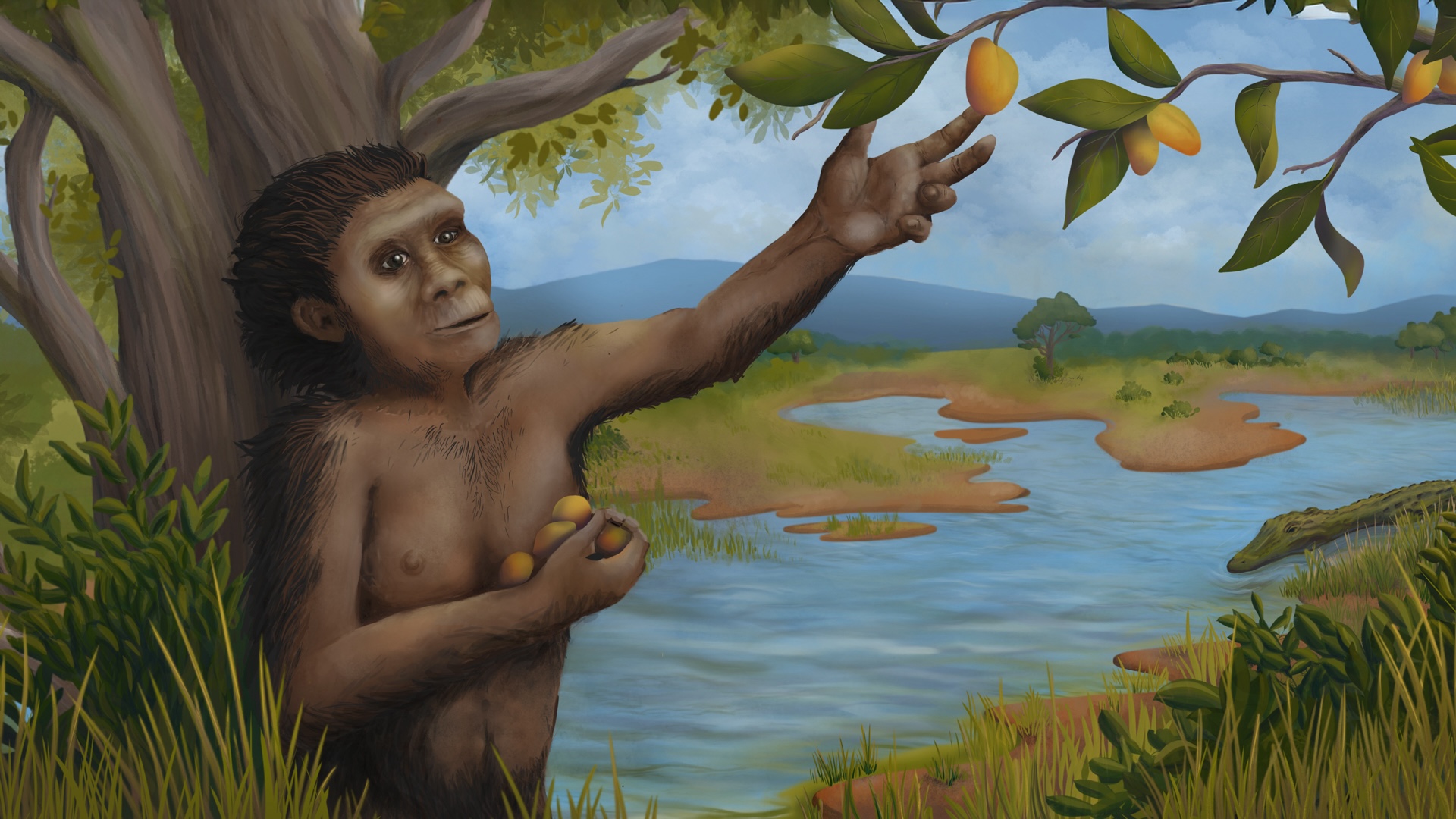
Editor's note: This article is part of a special package written for the 50th anniversary of the discovery of a 3.2 million-year-old A. afarensis fossil (AL 288-1), nicknamed "Lucy."
From a distance, it might have looked like a small child was wending her way through the waving grass along a vast lake. But a closer look would have revealed a strange, in-between creature — a big-eyed imp with a small head and an apelike face who walked upright like a human.
She may have looked warily over her shoulder as she walked, on alert for saber-toothed cats or hyenas. She may have used her strong arms to climb the shrubby trees nearby, searching for fruit, eggs, or insects to eat. Or perhaps she simply rested on the shores of the croc-infested waters, gulping down water on a hot day.
She likely had no idea it was her last day on Earth.
Roughly 3.2 million years later, her skeleton was unearthed by paleoanthropologist Donald Johanson and his team on the International Afar Research Expedition.
The stunningly complete fossil was nicknamed "Lucy." And her remarkable species, Australopithecus afarensis, may have been our direct ancestor. Our discoveries about Lucy have transformed our understanding of humanity's tangled family tree.
Fifty years later, we know so much more about her species. In fact, anthropologists have learned so much about Lucy and her kind that we can now paint a picture of how she lived and died.
Her last day may have been filled with companionship, but it also entailed a relentless search for food. And it was likely dominated by the ever-present fear of predators.
"I suspect that the last day in her life was filled with danger," Johanson told Live Science.
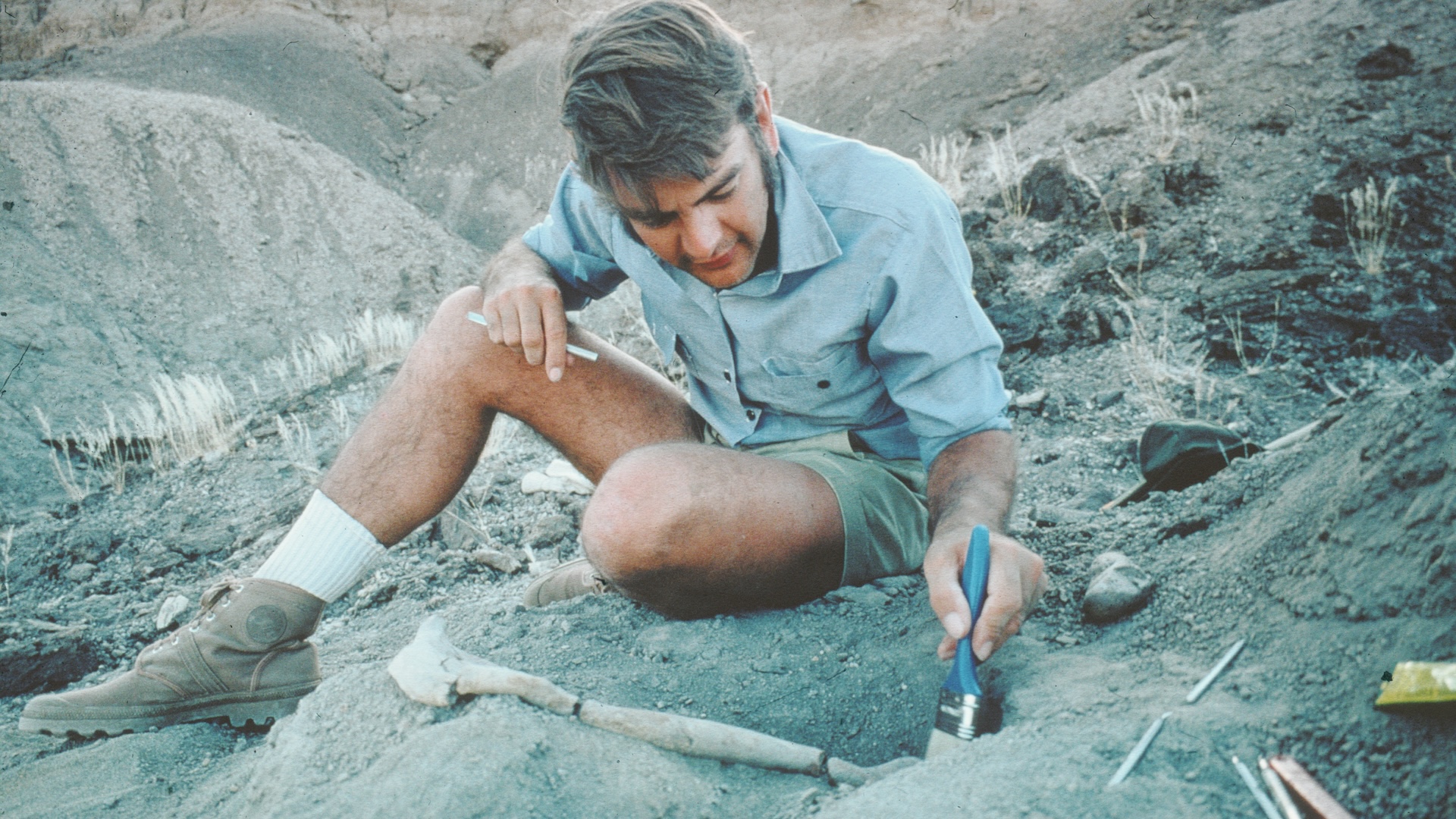
Finding Lucy
The modern story of Lucy began on Nov. 24, 1974, in Hadar, Ethiopia. Johanson and then-graduate student Tom Gray stumbled upon a bone poking out of a gully. Following two weeks of careful excavation, their team recovered dozens of fossilized bones. Together, these bones made up 40% of the skeleton of a human ancestor, making it the most complete skeleton of an archaic human species that had ever been found.
Pamela Alderman, another member of the expedition, suggested the team nickname the skeleton Lucy, after the Beatles song "Lucy in the Sky with Diamonds."
"And it just became iconic," Johanson said, "a moniker that everybody knew."
Lucy’s discovery transformed the study of ancient human relatives.
"I was in high school when she was found," John Kappelman, a paleoanthropologist at the University of Texas at Austin, told Live Science. "It really did reset the way paleoanthropology worked."
Lucy's skeleton, along with subsequent discoveries of other fossils of her species, have given anthropologists a wealth of information about what is essentially the halfway point in human evolution. At 3.2 million years old, Lucy and her kind lived equidistant in time from our ape ancestors and contemporary humans.
"She's our touchstone," Jeremy DeSilva, a paleoanthropologist at Dartmouth College, told Live Science. "Everything sort of comes back to her as the reference point, and she deserves it."
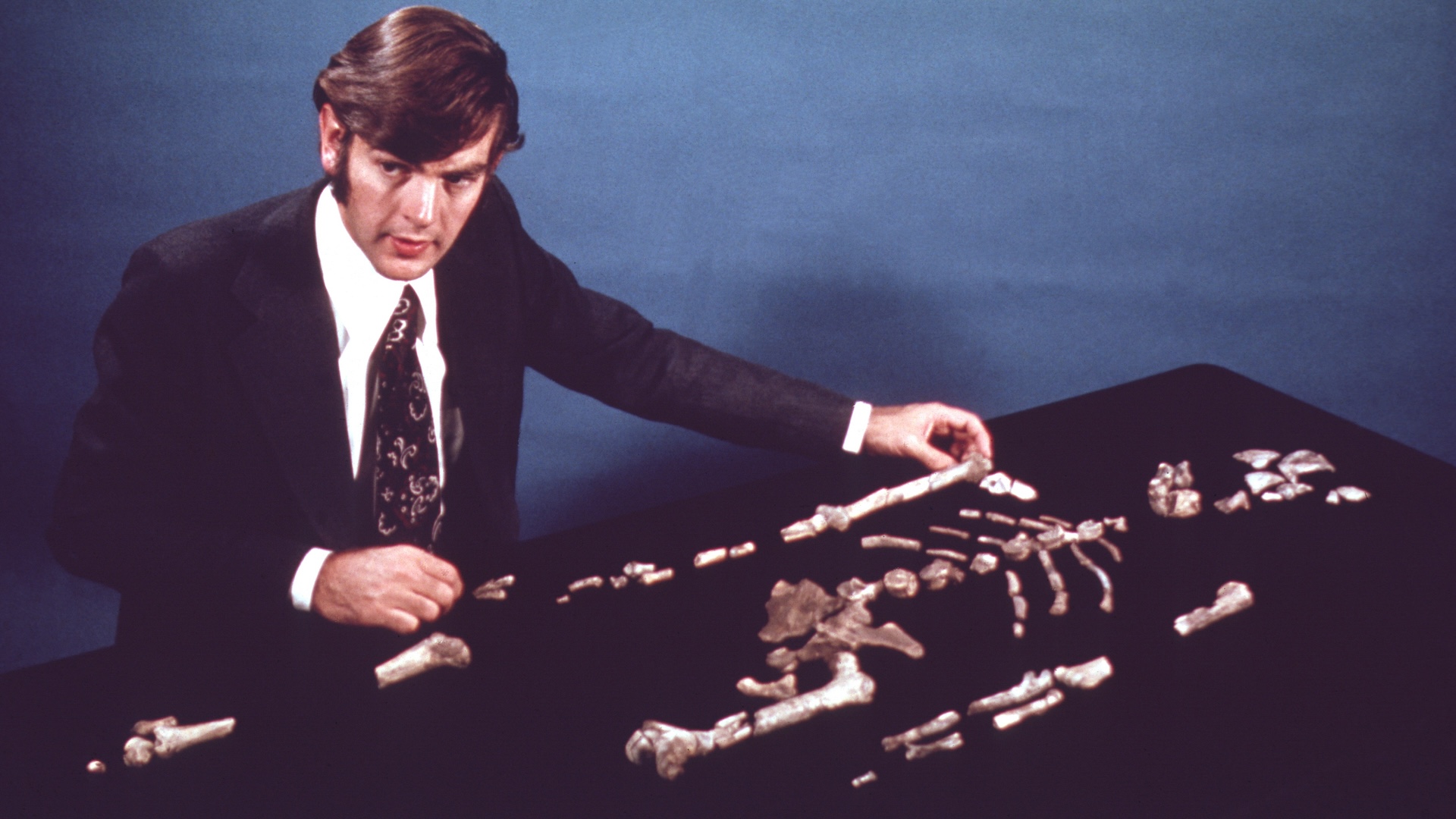
"A lot like us"
One thing is fairly certain: Though there were some obvious differences, Lucy looked and acted a lot like us.
"If we saw her coming out of a grocery store today, we would recognize her as upright walking and some kind of human," Johanson said.
Although her strong arms and the shape of her finger bones suggest Lucy could climb trees, her pelvis and knees were clearly adapted to walking on two feet.
The size of Lucy's thigh bone also revealed that she was only about 42 inches (1.1 meters) tall and 60 to 65 pounds (27 to 30 kilograms) — about the size of a 6- or 7-year-old child today. And the eruption of her wisdom teeth showed that, although she was in her early teens when she died, she was a fully mature young adult.
"Australopithecus in general was maturing fast," DeSilva said, "and it makes sense if you're on a landscape full of predators." In species that are frequently prey, individuals that mature faster are more likely to pass on their genes. But australopithecines were unique—while their teeth and bodies matured quickly, their brains grew more slowly, telling us that they relied quite a bit on learning for survival, DeSilva said.
Her discovery also settled a debate that was raging in the early 1970s: Did our big brains evolve before we learned to walk upright? Lucy's head, which was not much bigger than a chimp's, showed the answer was no. Our ancestors became bipedal long before they evolved large brains.
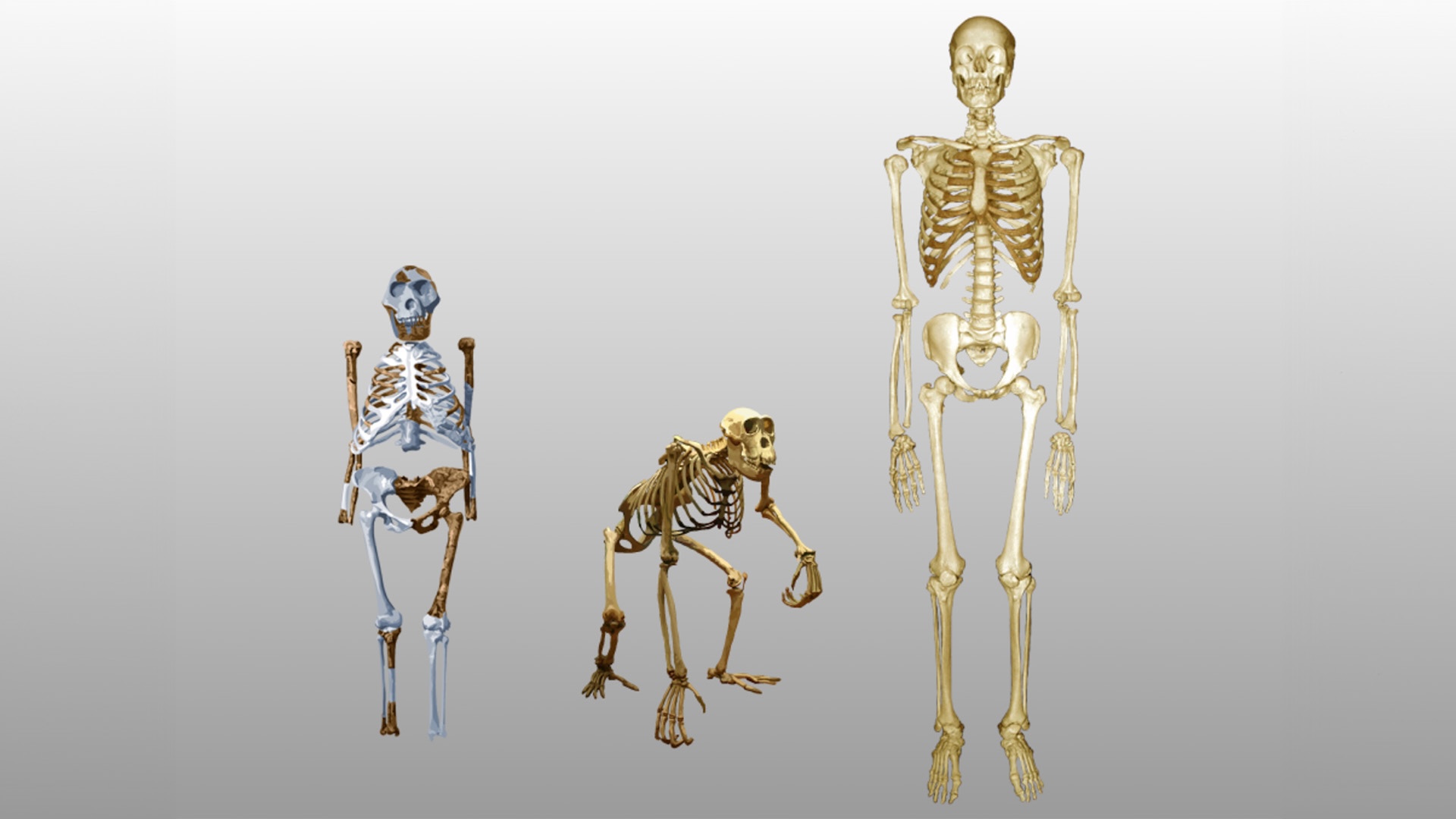
Lucy's clan
Because her skeleton was found on its own, Lucy's "social life" is a little murkier than other parts of her daily life. But many researchers think she lived in a mixed-sex group of about 15 to 20 males and females, not unlike modern-day chimpanzees do.
And although there's no direct evidence, Lucy's skeletal maturity suggests she could have had a baby. Bringing that relatively large-headed newborn through her relatively narrow pelvis would have been challenging, which means she may have had the help of a primitive "midwife."
If Lucy had a baby, she also likely had a partner. Other A. afarensis fossils, such as those of Kadanuumuu, show male australopithecines were only slightly larger than females, which, in primates, usually corresponds to more monogamous pairings.
Lucy and her kind would have spent a significant amount of their time avoiding becoming another animals' lunch. "These small creatures would have been nice hors d'oeuvres for a sabertooth or a large cat or hyena," Johanson said.
Perhaps because of that omnipresent danger, the group likely relied on each other.
"I think they had each other's backs and helped each other out," DeSilva said, "especially when they were in dangerous situations."
A healed bone fracture seen in Kadanuumuu provides evidence that these primates cared for one another. Around 3.6 million years ago, this male australopithecine broke his lower leg. By the time he died, though, the break was fully healed.
"On that landscape with that many predators, no doctors, no hospitals, no casts, no crutches, how in the world do you survive if not for social assistance?" DeSilva said. "It's really strong evidence that they didn't leave each other for dead."
Lucy's last day
Lucy probably started her last day much like any other, waking up from the treetop nest made of branches and leaves where she slept, along with her group, before setting off to find food.
It's not clear whether she would have been alone or in a group when she left to forage; if she did have a baby, she may have carried it.
But there's no doubt that she would have spent a significant part of her day looking for food. She most likely ate a few staples, such as grasses, roots and insects, chemical elements in her tooth enamel showed. She may have happened upon the eggs of birds or turtles and promptly gobbled them up as tasty, protein-rich treats. And if she was lucky enough to come across a carcass of a large mammal, such as an antelope, that hadn't been picked clean, she and her troop mates may have pulled the flesh from the bone, using large rocks.
"They can't afford to be picky eaters as these slow bipeds in a dangerous environment," DeSilva said. "They're eating everything they can get their hands on."
However, there's no evidence that Lucy’s species used fire to cook any of their food.
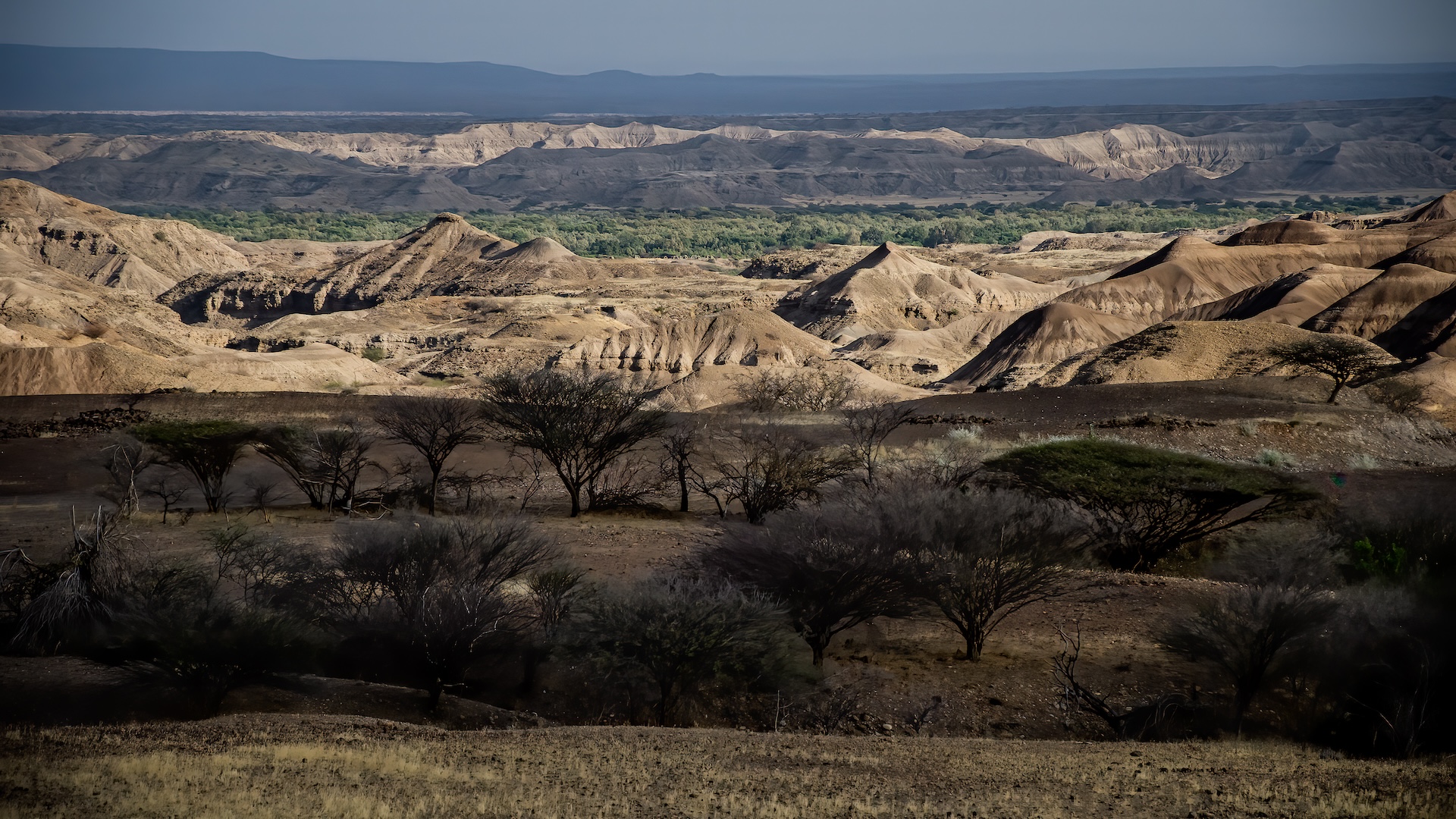
Death at the water's edge
In the past 50 years, we've created a picture of Lucy's last moments. It's not clear exactly why she was by the lake; maybe she was thirsty, or perhaps it was a great spot to look for food.
But there are two main theories for how she died.
"Perhaps she was down there at the water and — bam! — a crocodile comes out," Johanson said. "Crocodiles are incredibly fast, and it's a dangerous place if you're a little creature" like Lucy.
Johanson found one carnivore tooth mark on Lucy's pelvis, and it had not healed, meaning it occurred around the time of her death. Although the animal that made the mark has not been conclusively identified, "we know that australopithecines were preyed upon because there are a number of examples," Johanson said.
In 2016, Kappelman and his colleagues put forward an alternate ending for Lucy: a catastrophic fall from a tree.
Based on high-resolution CT scans and 3D reconstructions of Lucy's skeleton, Kappelman identified fractures in her right shoulder, ribs and knees that were unlike the typical fracturing that occurs in fossils crushed under the weight of dirt and rocks for millions of years.
"Something traumatic happened here during life," Kappelman said.
The kinds of fractures Lucy suffered are consistent with a fall from a considerable height, perhaps from a tall tree in which she was foraging for food.
I like to think all fossils are pretty special, but there's nothing like Lucy.
Jeremy DeSilva
"She hit on her feet and then her hands, which meant she was conscious when she hit the ground," Kappelman said. "I don't think she survived very long."
It's not clear whether she was alone when she died. But even if she was with others of her kind, they likely wouldn't have done much with her body.
There's no evidence that A. afarensis "bodies were treated any differently than any other animal," DeSilva said. "Maybe there was some curiosity around it, and then they carried on."
Primate researchers have documented other species' curiosity about inanimate bodies. For example, chimpanzees often care for the body for a few hours or days after death, sometimes guarding the body.
Lucy's group may have done the same for her until her body was naturally buried, which would have happened quite rapidly, perhaps by a flood or mudslide.
In the end, though, "we know very little about how any of these creatures died," Johanson said.
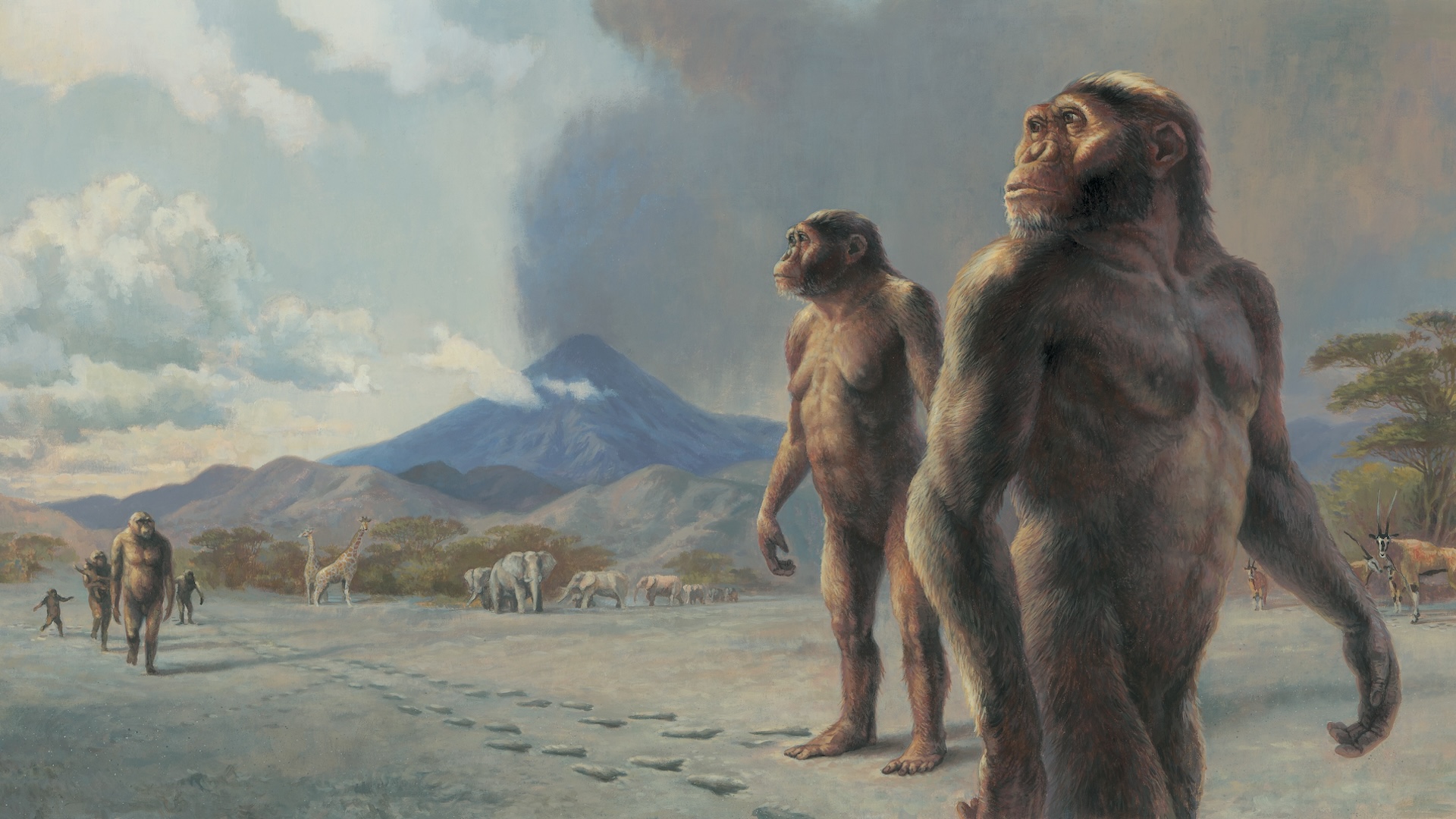
Lucy lives on
Thanks to Johanson's 1974 discovery of Lucy — as well as other important findings, like the "First Family" and the footprints at Laetoli in Tanzania — we now know quite a lot about A. afarensis.
"It was a highly successful species that was comfortable in lots of different habitats," Johanson said; A. afarensis fossils have been found in Kenya in addition to Ethiopia and Tanzania. "From an evolutionary perspective, her species was highly adaptable," he said.
Lucy has had a broad impact on the field of anthropology.
"The discovery of Lucy really hit the start button for looking in older and older sediments in Africa," Kappelman said. As a result, we have found numerous ancient hominin species and now have 50 years' worth of fossil evidence that human evolution was messy and complex.
Lucy was the only human ancestor discovered at Hadar. But a couple dozen miles away at Woranso-Mille, a paleontological site in Ethiopia, Yohannes Haile-Selassie, director of the Institute of Human Origins at Arizona State University, and his colleagues have found evidence of a strange land inhabited by multiple humanlike species between 3.8 million and 3.3 million years ago. For instance, Lucy's kind coexisted alongside another ancient relative, A. anamensis.
Would they have been friends, enemies, competitors or something in between? Right now, anthropologists still have little idea what this landscape teeming with ancient hominins would have looked like.
But perhaps 50 years from now, we'll have a better picture of how Lucy's kind interacted with these other ancient hominins. Even then, Lucy will likely remain one of the most famous fossils of all time.
"I like to think all fossils are pretty special," DeSilva said, "but there's nothing like Lucy."







